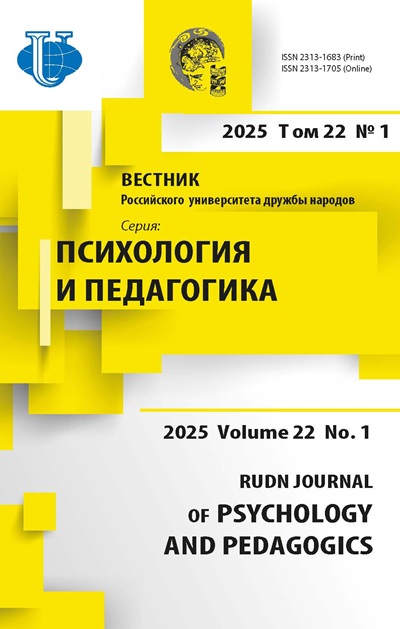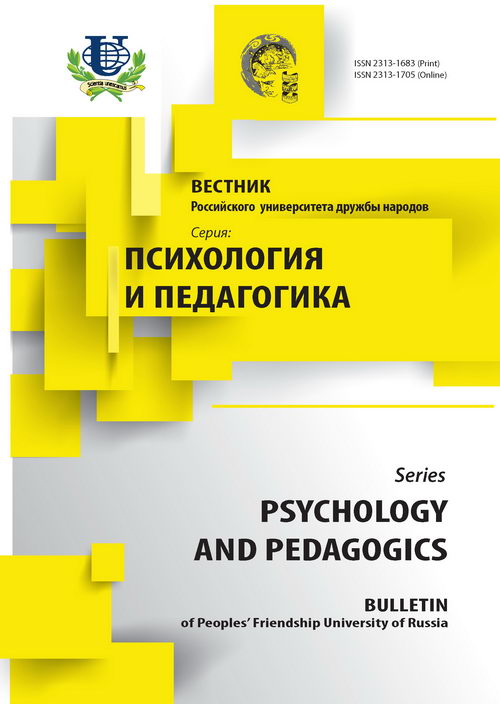ПУПИЛЛОМЕТРИЧЕСКИЕ ПРЕДИКТОРЫ ИНТЕРНЕТ-ЗАВИСИМОСТИ
- Авторы: Ершова РВ1, Семина ТМ1, Варченко НН2, Ганькин КА2, Новик ВП3
-
Учреждения:
- Государственный социально-гуманитарный университет
- OAO «Самбон Пресижн энд Электроникс» (Республика Корея)Представительство в Москве
- «ИриТех Ко., ЛТД» (Республика Корея)Представительство в Москве
- Выпуск: № 1 (2016)
- Страницы: 42-54
- Раздел: Статьи
- URL: https://journals.rudn.ru/psychology-pedagogics/article/view/13409
- ID: 13409
Цитировать
Полный текст
Аннотация
Целью данного исследования является изучение возможности использования бинокулярной синхронной пупиллометрии как метода измерения интернет-зависимости. В исследовании участвовало 326 студентов (179 женщин и 147 мужчин, средний возраст респондентов - 18,6 лет). Участники были разделены на три группы: «интернет-зависимые», «независимые от Интернета» и «умеренно зависимые» на основе данных нормального распределения результатов по тесту интернет-зависимости (Chen’s Internet Addiction Scale). Пупиллометрия была использована для сравнения выраженности показателей интернет-зависимости в двух группах. Интернет-зависимость в пупиллометрических параметрах проявляется как увеличенная ширина зрачка, эмоциональная нестабильность, истощение, вялость зрачковой реакции в сочетании с глубиной и стремительностью реакции. Уровень интернет-зависимости положительно связан с количеством пупиллометрических параметров. Результаты свидетельствуют о том, что у интернет-зависимых студентов присутствуют изменения в реакции зрачка, результаты могут обеспечить новый взгляд на патогенез интернет-зависимости.
Об авторах
Р В Ершова
Государственный социально-гуманитарный университетКафедра психологии
Т М Семина
Государственный социально-гуманитарный университетКафедра психологии
Н Н Варченко
OAO «Самбон Пресижн энд Электроникс» (Республика Корея)Представительство в Москве
К А Ганькин
OAO «Самбон Пресижн энд Электроникс» (Республика Корея)Представительство в Москве
В П Новик
«ИриТех Ко., ЛТД» (Республика Корея)Представительство в Москве
Список литературы
- Anderson C.A. et al. Violent video game effects on aggression, empathy, and prosocial behavior in eastern and western countries: a meta-analytic review. Psychological bulletin, 2010, vol. 136, no 2, pp. 151.
- Angrist J., Lavy V., Schlosser A. Multiple experiments for the causal link between the quantity and quality of children. Journal of Labor Economics, 2010, vol. 28, no 4, pp. 773-824.
- Block J.J. Issues for DSM-V: internet addiction. American Journal of Psychiatry, 2008, no 165, pp. 306-307.
- Bolz N. The User-illusion of the World: On the Meaning of Design. Mediamatic Magazine, 1998, vol. 9, no 1.
- Castells M. The network society: A cross-cultural perspective. Massachusetts, Edward Elgar, 2004.
- Cao F., Su L. Internet addiction among Chinese adolescents: prevalence and psychological features. Child Care Health Dev., 2007, no 33, pp. 275-81.
- Ershova R. O psikhologitcheskih posledstviyah tehnologitcheskogo proriva [Psychological effects of technological breakthroughs]. Rossiya i mir: razvitiye tsivilizatsiy [Russia and World: development of civilization]. Moscow, 2014, pp. 113-124.
- Ershova R., Varchenko N., Gankin K. O psikhophisiologitcheskih prediktorah litchnostnih svoistv [Psychophisiological predictors of personal characteristics]. Tchelovetcheskiy capital [Human capital], 2014, no 7 (67), pp. 52-55.
- Feldshtein D. Glubinniye izmeneniya detstva i obuslovlennaya imi aktualizatsiya psihologo-pedagogitcheskih problem razvitiya obrazovaniya [Deep changes in childhood and the consequent updating of psychological and pedagogical problems of education]. Vestnik prakticheskoy psihologii obrazovzniya [Herald of Applied Psychology of Education], 2011, no1, pp. 45-54.
- Giesecke M. Sinnenwandel, Sprachwandel, Kulturwandel. Studienzur Vorgeschichte der Informationsgesellschaft. Revue de l’IFHA, Date de parution de l’œuvre, 1992.
- Griffiths M. Does Internet and computer «addiction» exist? Some case study evidence. CyberPsychology and Behavior, 2000, vol. 3, no 2, pp. 211-218.
- Koh Y.S. Development and application of K-Scale as diagnostic scale for Korean Internet addiction. 2007 International Symposium on the Counseling and Treatment of Youth Internet Addiction. Seoul, Korea, National Youth Commission, 2007, pp. 294.
- Kuss D. J., Griffiths M. D., Binder J. F. Internet addiction in students: Prevalence and risk factors. Computers in Human Behavior, 2013, vol. 29, no 3, pp. 959-966.
- Maligin V. et al. Internet-zavisimoe povedeniye. Kriterii i metodi diagnostiki [Internet addiction. Diagnosis criteria]. Moscow, 2011. 33 p.
- Matveev I.A., Varchenko N.N., Gankin K.A. Using binocular pupillometry method for evaluating functional state of person. Sports Technology, 2015, vol. 8.
- Nakayama M., Shimizu Y. Frequency analysis of task evoked pupillary response and eye-movement. Proceedings of the 2004 Symposium on Eye Tracking Research & Applications. New York, ACM, p. 71-76.
- Pea R. et al. Media use, face-to-face communication, media multitasking, and social well-being among 8-to 12-year-old girls.Developmental psychology, 2012, vol. 48, no 2, pp. 327.
- Przybylski A. K. et al. Motivational, emotional, and behavioral correlates of fear of missing out. Computers in Human Behavior, 2013, vol. 29, no 4, pp. 1841-1848.
- Sim T. et al. A conceptual review of research on the pathological use of computers, video games, and the Internet. International Journal of Mental Health and Addiction, 2012, vol. 10, no 5, pp. 748-769.
- Small G., Vorgan G. iBrain. New York, Harper Collins, 2009. 256 p.
- Turkle S. The second self: Computers and the human spirit. Mit Press, 2005.
- Vessman L., Khanushek E. Rol kachestva obrazovaniya v ekonomicheskom roste (chast 1) [The role of education quality in economic grow (part 1)]. Voprpsy obrasovaniya [Education Issues], 2007, no 2, pp. 86-116.
- Voiskounsky A.E. Ot Psikhologii compjuterizatsii k psikhologii interneta [From Psychology of Computerization to Psychology of Internet]. Vestnik Moskovskogo universiteta. Serija 14. Psikhologija [The Moscow University Herald. Serie 14. Psychology], 2008, no.2, pp. 140-153.
- Willke H. Smart governance: governing the global knowledge society. Campus Verlag, 2007.
- Xu J. et al. Personal characteristics related to the risk of adolescent internet addiction: a survey in Shanghai, China. BMC public health, 2012, vol. 12, no. 1, pp. 1106.
- Yen J.Y. et al. The comorbid psychiatric symptoms of Internet addiction: attention deficit and hyperactivity disorder (ADHD), depression, social phobia, and hostility.Journal of adolescent health, 2007, vol. 41, no 1, pp. 93-98.
- Young K. et al. Cyber disorders: the mental health concern for the new millennium. CyberPsychology & Behavior, 1999, vol. 2, no 5, pp. 475-479.
- Zelenka A. From the Information Age to the Connected Age. Giga OM, 2007. Avialible at https://gigaom.com/2007/10/06/from-the-information-age-to-the-connected-age/
- Zhou Y. et al. Gray matter abnormalities in Internet addiction: a voxel-based morphometry study. European journal of radiology, 2011, vol. 79, no 1, pp. 92-95.
Дополнительные файлы















